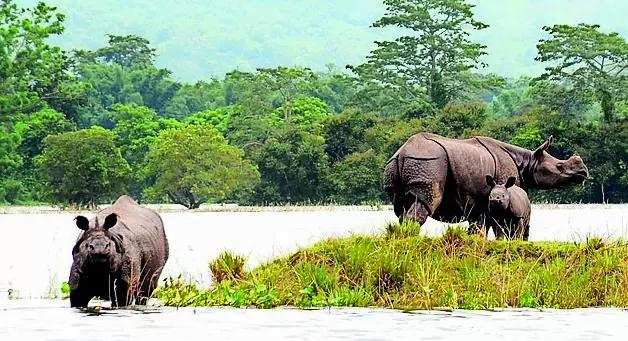Rescue Operation at Kaziranga National Park: Saving Animals from Flooding
GUWAHATI: A team of dedicated forest department officials recently conducted a heroic rescue operation in the midst of a devastating flood at Kaziranga National Park. Four hog deer tragically drowned in the floodwaters, but 24 other precious animals, including deer, were successfully rescued and moved to dry, safe areas.
The flooding has impacted a significant number of camps in the Eastern Assam Wildlife Division, with 167 out of 233 camps being inundated so far. Forest department employees, who work tirelessly to protect the park’s flora and fauna, have been forced to evacuate eight camps in various divisions.
To ensure the safety of both wildlife and visitors, the Golaghat district administration has issued prohibitory orders restricting the speed of vehicular traffic on NH-37 (New NH-715) passing through the national park to between 20 to 40 km/hour.
Despite the challenges posed by the floods, experts highlight the essential role they play in preserving and rejuvenating the ecosystem of the park. The overflowing waters of the Brahmaputra River bring revitalization to the grasslands, flush out aquatic weeds, and provide mineral-rich alluvial soil crucial for the growth of grass and shrubs that sustain the herbivores.
Kaziranga National Park, a UNESCO World Heritage Site, is renowned for its population of the Great Indian one-horned rhinoceros. The landscape of Kaziranga, with its forests, elephant grass, and marshes, provides a unique habitat for a diverse range of wildlife. Established as a national park in 1974, Kaziranga continues to be a symbol of India’s commitment to wildlife conservation.









